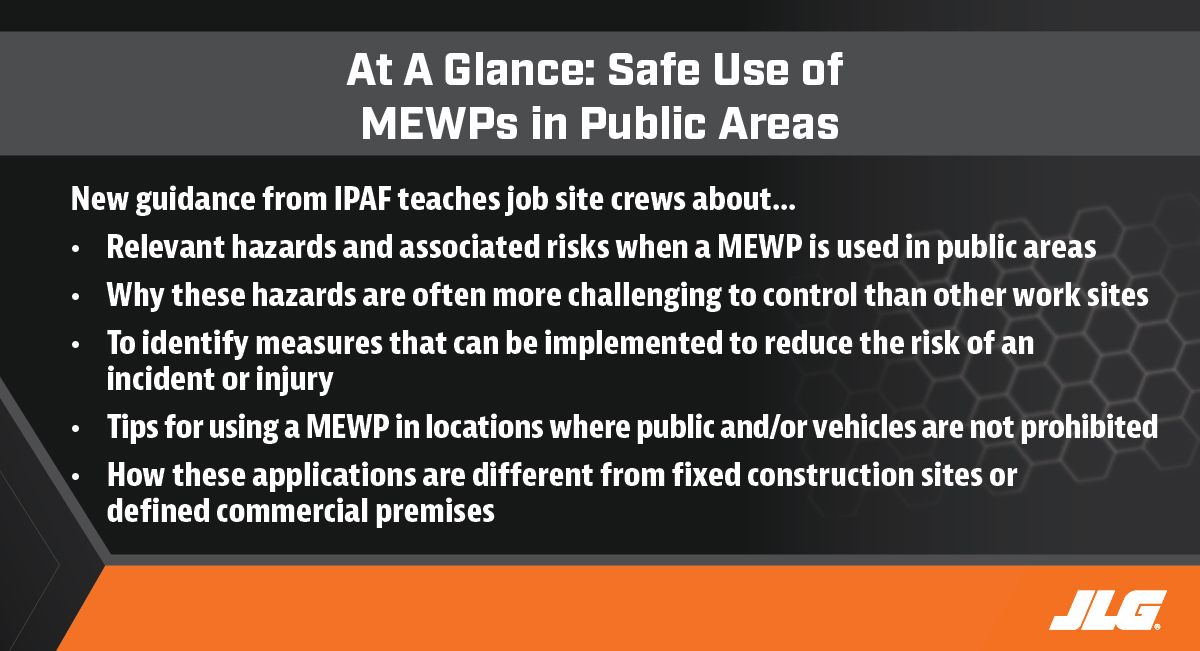Long used in managed and controlled environments for construction tasks, MEWPs (mobile elevating work platforms) are also now frequently used for work-at-height applications in public areas, like telecom and utilities, public-sector contractors, highways/streetlighting engineers, facilities/commercial premises management, tree care and arboriculture.

When members of the public might be present on a job site, it is often more challenging to control unrelated work activities, such as vehicular or foot traffic. To help job site crews better understand the relevant hazards and associated risks, IPAF (International Powered Access Federation) has published new guidance on using MEWPs in public areas.
In this document, IPAF provides specific information for three key stakeholders involved in the completion of work at height tasks involving a MEWP on or near roads or in public areas:
- Client/property owner – commissioning work at height. The client has a duty of care and major influence over the way a project is procured and managed, including the selection and actions of contractors.
- Contractor/employer (User) – responsible for completion of the work. The contractor/employer, often referred to as the User, is any person or organization that controls the planning, management and use of the MEWP for a specific task and is responsible for ensuring the MEWP is kept in safe working condition. The User is not necessarily the operator.
- MEWP operator – accessing the work area using the MEWP. An operator is a person using the MEWP controls from the work platform or the base. They may be employed or working for themselves. This guidance may also provide a useful reference for any member of the public who observes the use of a MEWP near a road or in a public area and has concerns about the safety of the operation.
The guide also identifies measures that crews can implement to reduce the risk of an incident or injury when using a MEWP in locations where the public and/or vehicles are not prohibited, such as on fixed construction sites or defined commercial premises.
To download a free copy of IPAF’s Guide for the Safe Use of MEWPs in Public Areas, click here.
Do you want to stay up-to-date with industry news and issues similar to this? Make sure you subscribe below to receive monthly updates from #DirectAccess with newly posted content so you never miss important information.